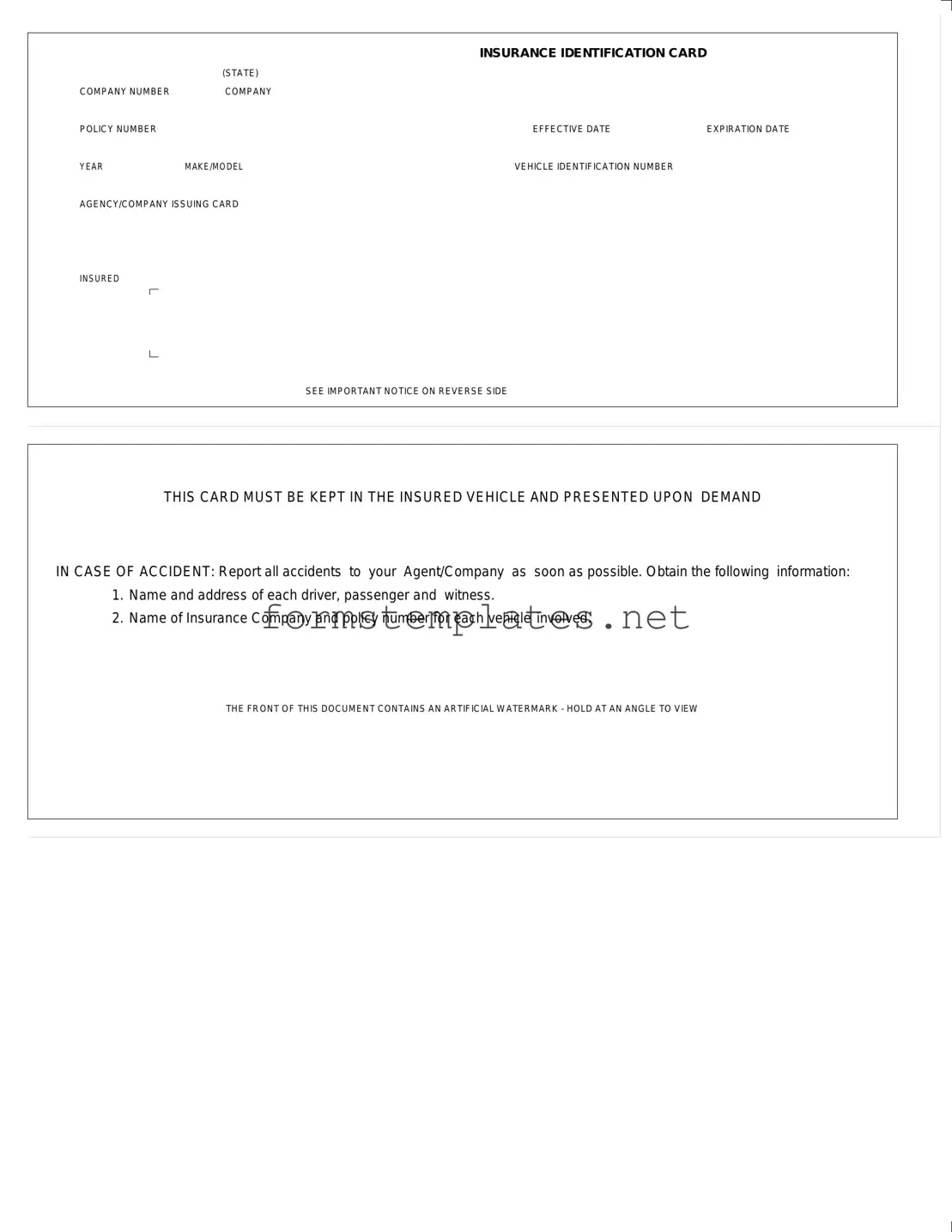Free Auto Insurance Card Template
The Auto Insurance Card is a vital document that provides proof of insurance coverage for a vehicle. It includes essential details such as the insurance company name, policy number, and effective dates. This card must be kept in the vehicle at all times and presented upon request in the event of an accident.
Open Editor Now

